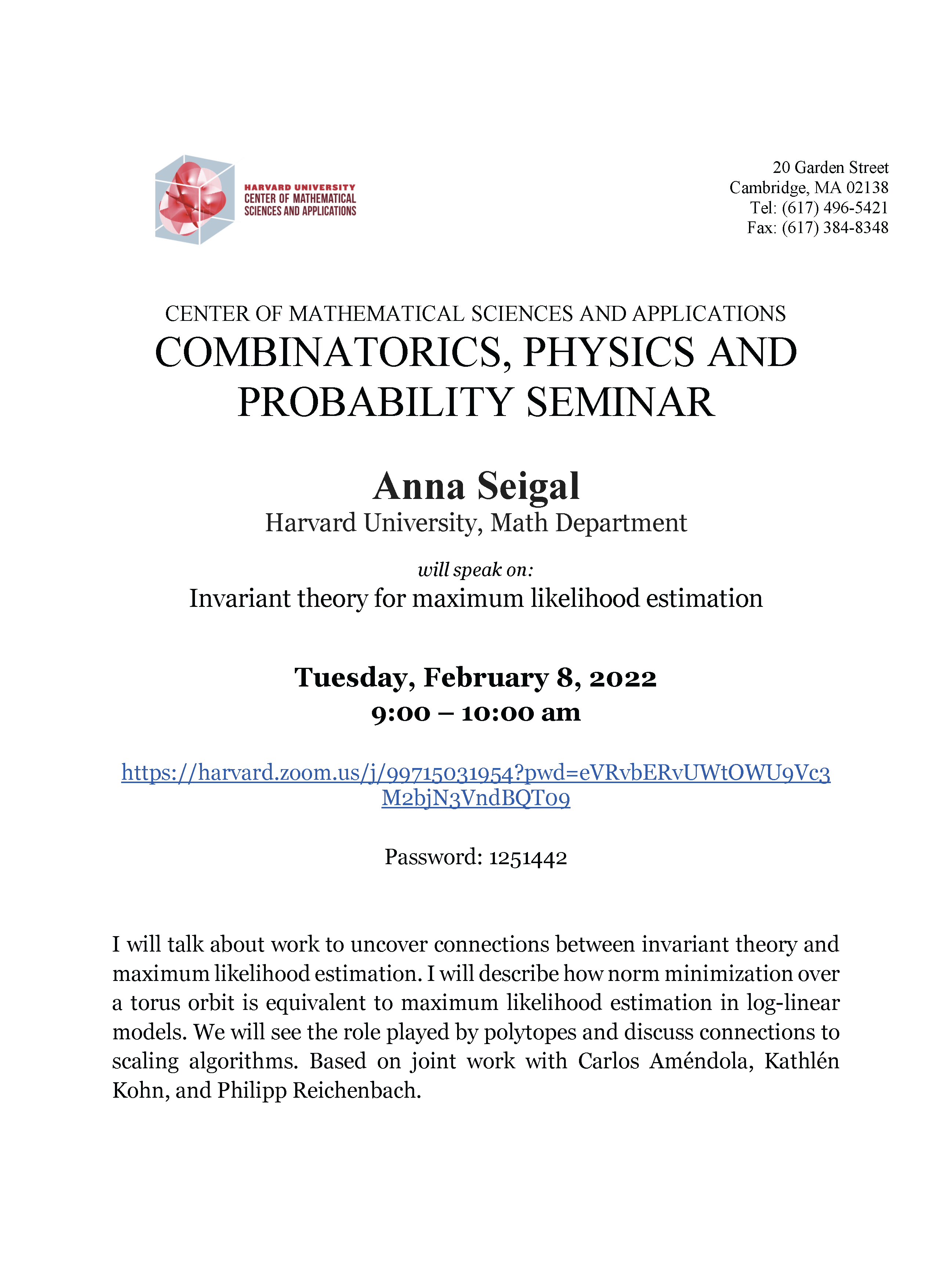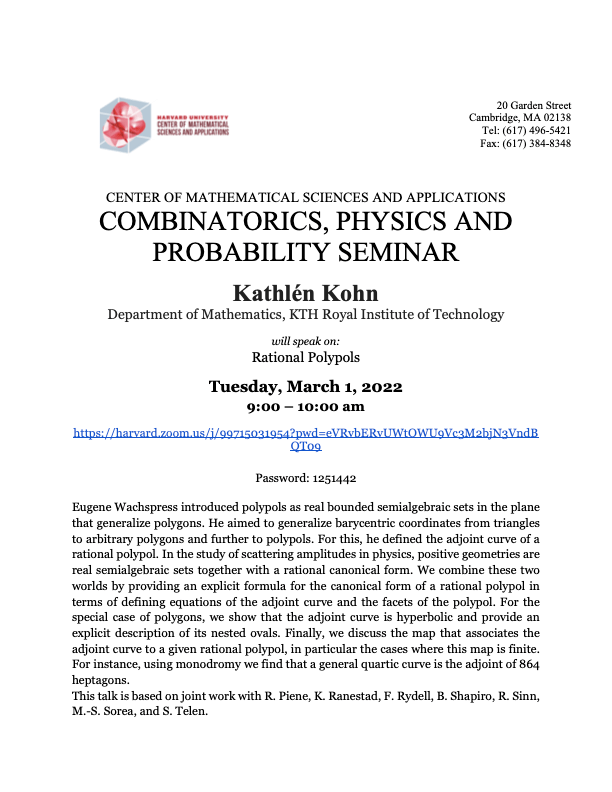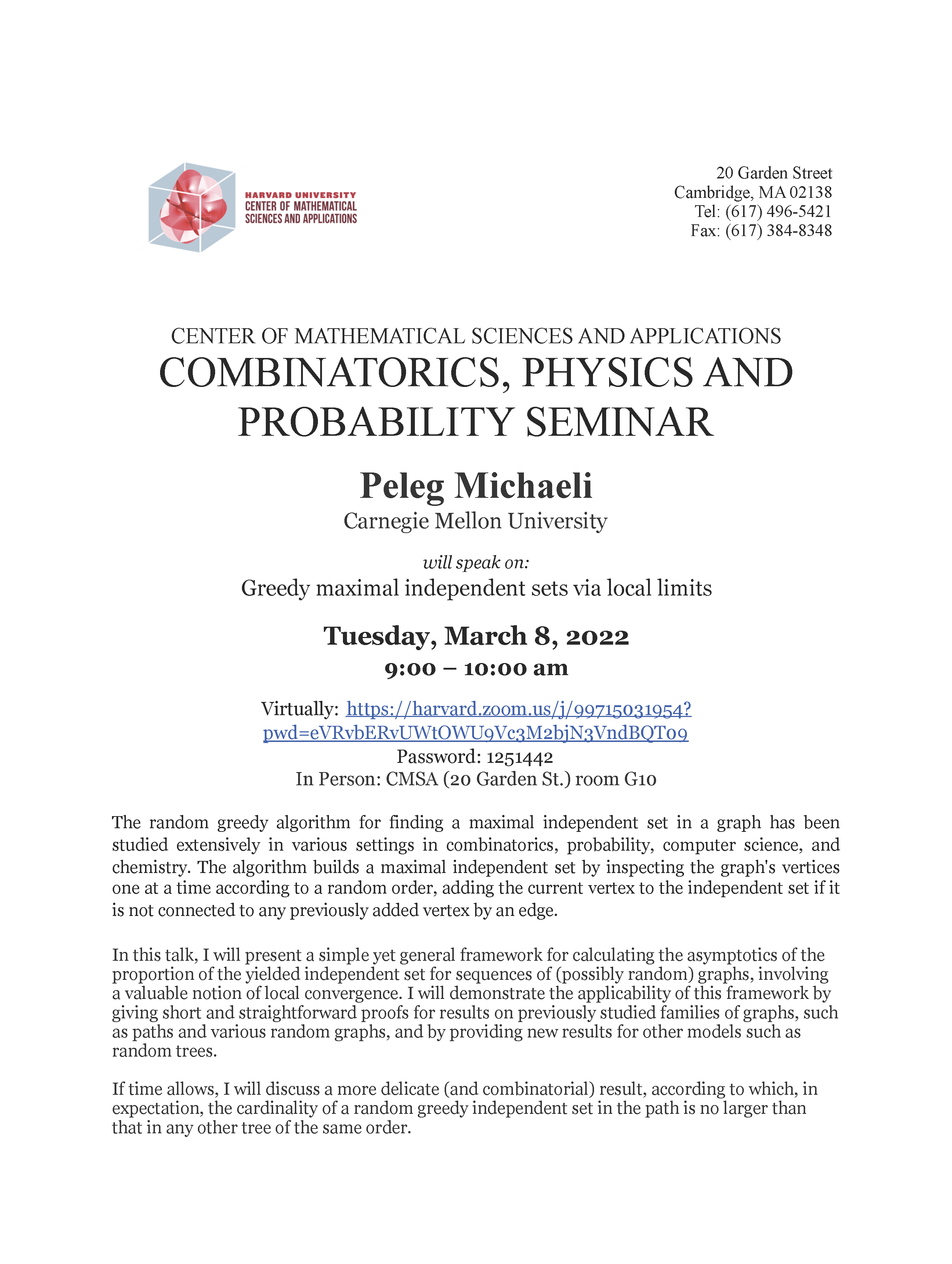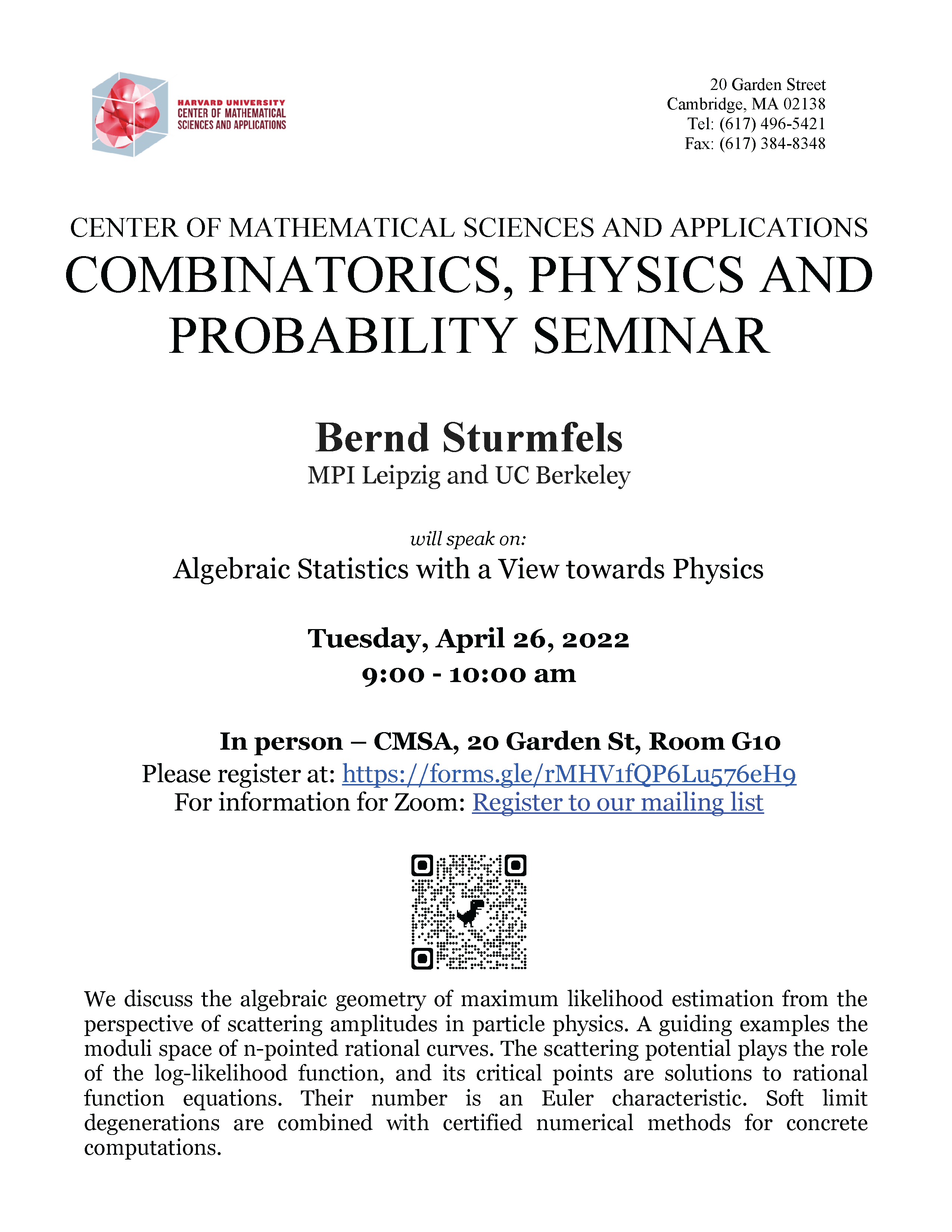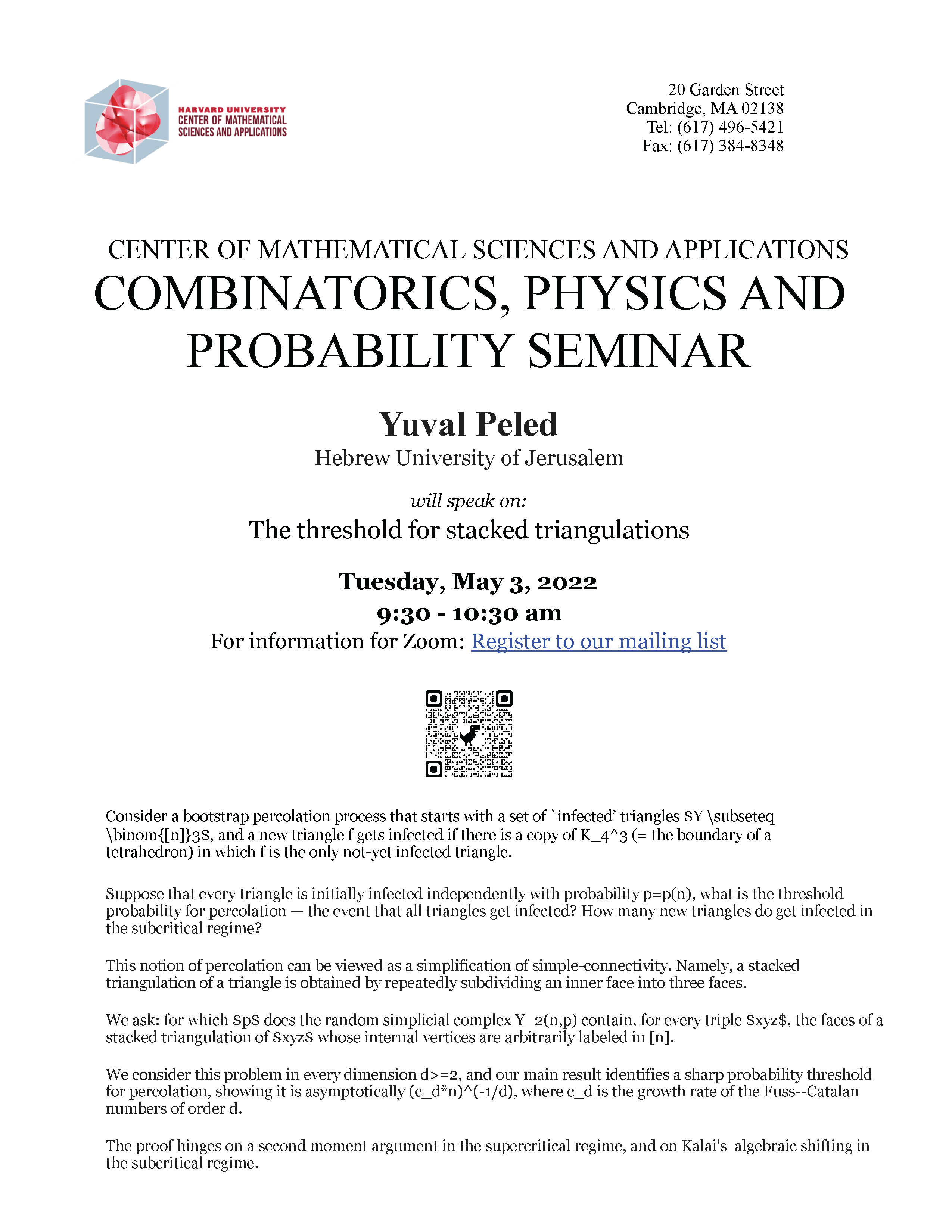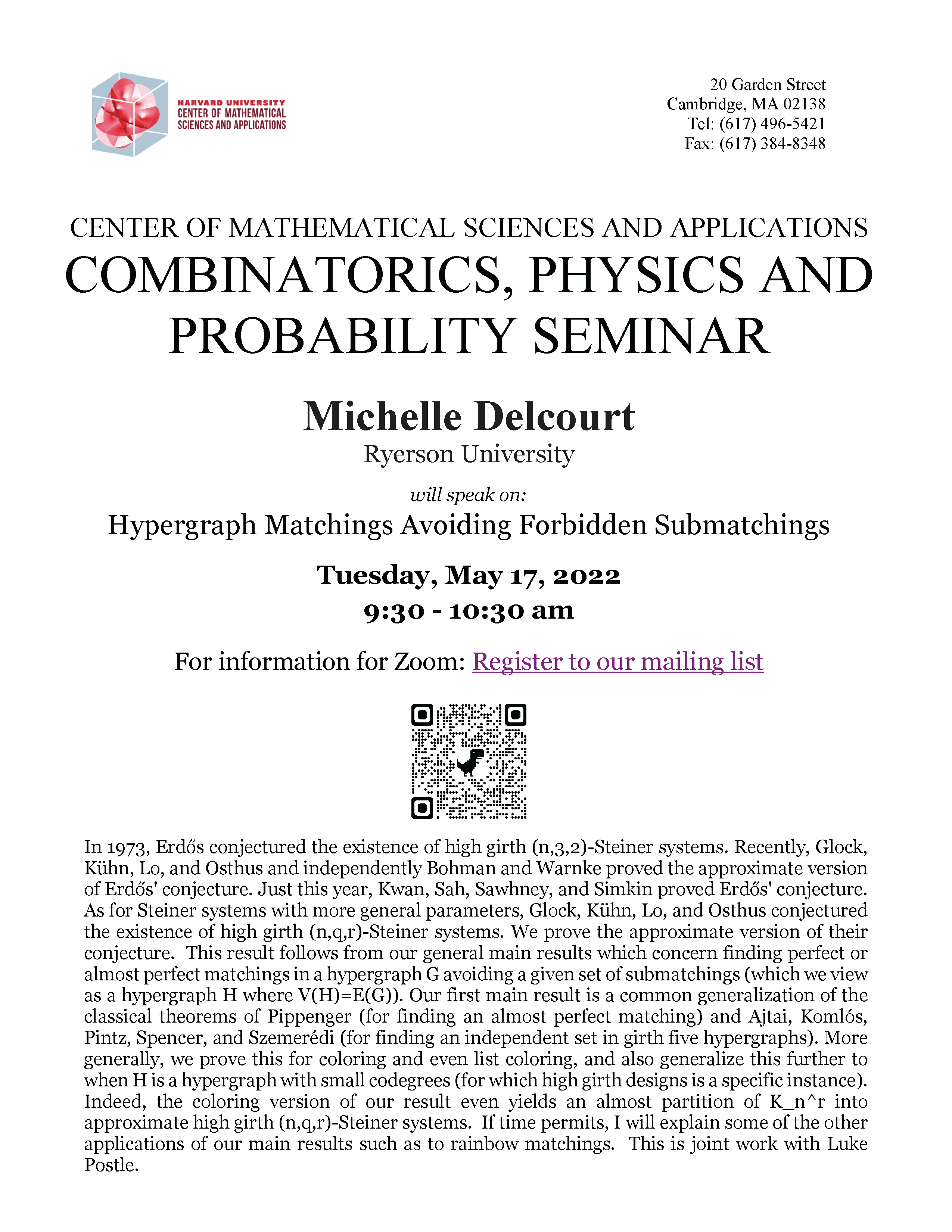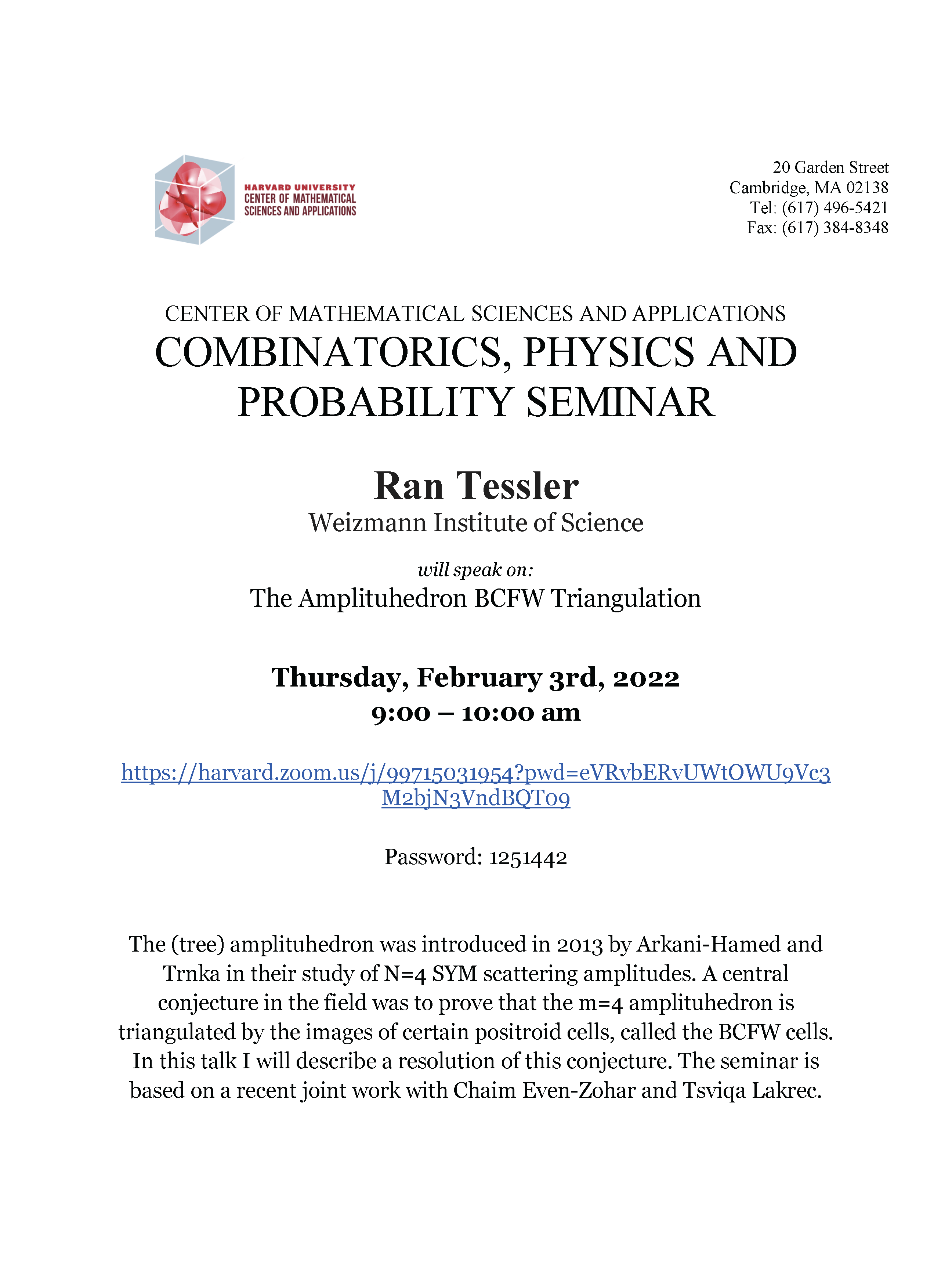
The Amplituhedron BCFW Triangulation
Abstract: The (tree) amplituhedron was introduced in 2013 by Arkani-Hamed and Trnka in their study of N=4 SYM scattering amplitudes. A central conjecture in the field was to prove that the m=4 amplituhedron is triangulated by the images of certain positroid cells, called the BCFW cells. In this talk I will describe a resolution of this conjecture. The […]

